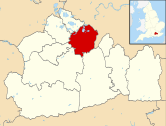Reed's School
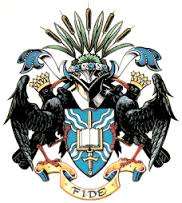 | |
| Motto | Fide (Have Faith) |
|---|---|
| Established | 1813 |
| Type | Public school (United Kingdom) |
| Headmaster | Mark Hoskins |
| Chair of Governors | Ian Plenderleith C.B.E. |
| Founder | Rev. Dr. Andrew Reed (clergyman) |
| Location |
Sandy Lane Cobham Surrey KT11 2ES England Coordinates: 51°20′18″N 0°22′34″W / 51.338253°N 0.375981°W |
| Local authority | Surrey County Council |
| Students | 700 (620 Boys, 80 Girls) |
| Gender | Boys, with a Co-educational Sixth Form |
| Ages | 11–18 |
| Houses | Blathwayt, Bristowe, Capel & Mullens |
| Publication | Reedonian |
| Alumni | Old Reedonians |
| Website |
www |
Reed's School is an independent day and boarding school for boys located in Cobham, Surrey, England, founded by Rev. Andrew Reed, D.D. in 1813 and incorporated by Act of Parliament in 1845 under the presidency of the Archbishop of Canterbury, the Duke of Wellington and the Marquis of Salisbury. It is boys only until Year 11, but admits girls in Years 12 & 13. There are currently around 660 day pupils (600 boys, 60 girls) and 100 full-time boarders (80 boys, 20 girls). The school has historical links with the City of London Corporation and the British Royal Family, a member of which has acted as patron from the school's earliest days. Since 1951, Queen Elizabeth II has acted as the school's 15th patron and has visited the school twice as the reigning monarch (she also visited as Princess Elizabeth in 1946), once in March 1997 and most recently in March 2014[1] (along with Prince Philip) as part of the school's bicentennial celebrations. During the 2014 visit, the Queen unveiled a new stained glass window, designed by the artist Helen Whittaker, in the Chapel.[2] Queen Elizabeth The Queen Mother opened a new wing in 1959 (this currently houses the 6th form boarders) and planted a tulip tree in the school's grounds. She had previously opened a library in 1939 at the school's former site at Watford. Since 1966, the school's headmasters have been members of the Headmasters' and Headmistresses' Conference (HMC). Former pupils are known as "Old Reedonians".
History
Founding
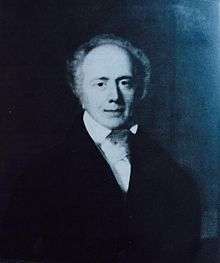
On 24 June 1813 the Rev Andrew Reed D.D., descended from Norfolk's political Rede family (which includes four-time Mayor of Norwich, Edward Rede) and later Colonel John Reed (Governor of Poole and ardent Roundhead), gathered a group of friends at his house in St. George’s Place, Cannon Street Road, to discuss his proposals for forming an institution to assist orphan children. A month later, on 27 July the East London Orphan Asylum was formally instituted. Reed gave an address in 1815, which was printed every year in the annual report, in which he set out the aims of the institution. He said that ‘the present day is the period of benevolence and philanthropy’ and that ‘the widow and orphan have an undisputed claim to our benevolence’. The aims he sought were set out in the general constitution adopted at a meeting of subscribers on 20 April 1815.
The objects of the charity were to provide relief to destitute orphans who were defined as children who had lost both parents or their father, with the mother unable to provide for them. It was emphasised from the beginning that children whose parents had been in respectable circumstances had the first claim on the charity.
By the time the general constitution was adopted in 1815 the charity had become established in a small way. A house in Clarke’s Terrace, Cannon Street Road, was taken in April 1814 for the use of the charity, a matron was chosen and a ladies’ committee appointed. In July three girls were elected as the first children to be helped. In February 1815 the word ‘East’ was dropped from the original title. Reed realised that he needed to obtain much more than local support if the institution was to flourish and despite his nonconformist background he recognised that the charity was unlikely to succeed unless it adopted the principles of the Church of England.
Reed does not seem to have had much personal wealth, but he had an extraordinary ability to attract the support and patronage of those who did. Prince Edward, Duke of Kent and Strathearn presided at the first annual festival dinner in 1815, establishing a virtually continuous history of royal patronage of the charity. Reed was able to secure financial support from the Stock Exchange and City Livery Companies, again establishing a tradition which has continued throughout the history of the school. James Capel of the stock broking firm of that name was a prominent early member of the board of managers (one of the school houses is named after him). Another notable early sponsor was the Duke of Wellington, a future Prime Minister of the United Kingdom.
London Orphan Asylum, London (1813-1871)
Initially the Asylum used two houses; one at Hackney Road, Shoreditch for the boys and one in Bethnal Green for the girls.[3] By 1820 this accommodation was inadequate, so 8 acres of land were purchased at Clapton as the site for new buildings. So the asylum's first unified site was at Lower Clapton Road, Clapton, where Newcome's School had stood.[4] The neo-classical designs submitted by the architect William Southcote Inman (1798 – 1879) were chosen and an appeal was launched for the funds to pay for the buildings. The foundation stone was laid by Frederick, Duke of York on 5 May 1823. The new buildings were completed by 1825 and were officially opened on 16 June by Prince Adolphus, Duke of Cambridge. There were 206 pupils in 1826 and 453 in the 1860s. During the asylum's time in East London, it was famous for having had some 2000 hymns written for it by the English architect James Edmeston (one each Sunday), a strong supporter of and frequent visitor to the London Orphan Asylum. Henry Beattie was chaplain and headmaster between 1852 and 1870. After the school's move to Watford, the East London buildings were used by the Salvation Army. Indeed, the three-day lying in state of the organisation's founder, William Booth, occurred there in 1912. Now, however, only the facade of the classical-style building remains.[5]
London Orphan Asylum/School, Watford (1871-1939)
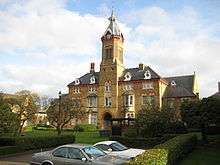
In November 1866 a typhoid epidemic killed 15 children and precipitated the board of managers into a decision to move the school to a new site. In 1867 they purchased 36 acres of land at Watford and chose the plans of the architect Henry Dawson (father of Bertrand Dawson) for the new school. The foundation stone was laid by the Prince of Wales, later Edward VII, and his wife the Princess of Wales and future Queen Alexandra, on 15 July 1869. The school was formally opened in 1871. It was renamed "London Orphan School" in 1915 (finally, in 1939, this was changed to "Reed's School" in honour of the founder). The LOA played football against Watford Rovers (the future Watford F.C.) in the early 1880s. Headmasters at the Watford site included Oliver Carter Cockrem, (M.A., LL.D.) and Rev. H.W. Russell, (B.A.). In the 1980s the buildings were converted into residential accommodation; being near to Watford Junction station they are convenient for commuters.
Reed's School, Totnes & Towcester (1939-1945)
In the 1930s, Edward, Prince of Wales (later Duke of Windsor) described the institution as a good school but said that there was one thing wrong with it - the name. So on 28 June 1939, it was called "Reed's School" in honour of the founder. During World War II the school was evacuated from Watford; the boys to the Seymour Hotel, Totnes and the girls to a number of houses near Towcester. The site was used as an Army hospital and then by the Ministry of Labour.[3]
Reed's School, Cobham (1945 - present)
After the war the governors decided not to return to the school at Watford, which the government in any case wished to retain as a headquarters building for the Ministry of Labour. In 1945 Dogmersfield Park, near Basingstoke, Hants, a large country house with about 120 acres of grounds (now the Four Seasons Hotel, Hampshire), was purchased for the girls’ school. For the boys the Fairmile estate of 56 acres with the buildings previously used by Sandroyd School in Sandy Lane, Cobham was purchased. The Sandy Lane site had been purpose-built in around 1905 by architects Treadwell and Martin, who were also responsible for the design of Scott's (restaurant) (now part of the Trocadero Centre) and other notable structures. The new site provided enviable facilities including a heated indoor swimming pool, a nine-hole golf course, and two squash courts.[6]
Unfortunately, financial difficulties made it impossible to maintain both schools and Dogmersfield Park had to be closed in July 1955 so that all the resources could be concentrated at Cobham where the school remains today. A new headmaster, Robert Drayson, was appointed in 1955 and remained until 1964, when he migrated to Stowe. In 1950, Reed's School began to take fee-paying pupils, while retaining its charitable element. Foundation bursaries are still available for children who have lost one or both parents and currently 10% of pupils are supported in this way.
Founder's prayer
The school's prayer, penned by the founder Rev. Andrew Reed, is recited at each chapel service:
"Blessed Saviour, Receive what I have: Strengthen my body and uplift my mind Let my heart be cleansed from any base feeling Let it become the temple of the Holy Ghost, And let me speak and act and think and live Under His inspiration; for thy name's sake. Amen."
Houses
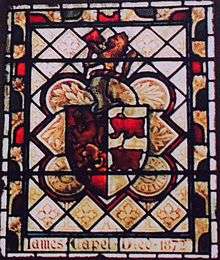
The school is made up of four houses, named after school benefactors: Blathwayt (royal blue ties), Bristowe (red ties), Capel (yellow ties) and Mullens (light blue ties). In interhouse competitions, the four houses compete for the Edmonson Cup. There is also the Hopwood Cup for the most academic house.
Years Seven and Eight in the School are separated into 'The Close', which has its own competitive houses named after sister locations: Clapton, Reedhams, Royal Putney, and Royal Wanstead.
Academic
Recent results in national examinations (GCSE and A-levels) consistently place Reed's amongst the top 200 independent schools in the country and the top 30 boys only and/or boys' schools with co-educational sixth forms.[7]
Sports
The major sports at Reed's School are rugby, hockey and cricket with academies in tennis, skiing and golf. The Senior School pupils (13+) play rugby, hockey and cricket in the Autumn, Spring and Summer Terms respectively. Pupils in The Close (the Junior School, for 11-13 year olds) play hockey, rugby and then cricket. In the 2014/15 season, rugby fixtures included matches against Brighton College, KCS, Wimbledon, Caterham and Hurstpierpoint College. Cricket is played against City of London Freeman's School, Hampton, St. Paul’s, St. George's Weybridge, Lord Wandsworth, Reading Oratory, KCS Wimbledon, Eltham College, King’s School, Canterbury and Merchant Taylor’s School and others. The indoor tennis centre was opened by alumnus and former British number one, Tim Henman on 18 November 2014. The facility is regarded by the LTA as one of only 17 high performance centres in the country.[8] The foundation stone for the 25 metre, five lane indoor swimming pool was laid by Duncan Goodhew on 15th November 1990.
The school performs at the highest level in a number of other sports such as squash, athletics, cross country, basketball and swimming as well as offering access to more unusual sports though an extended activities programme; such as shooting, mountain biking, kung-fu and sailing. Reed's has won the International School Sport Federation's world schools' tennis championship more than any other team (in 2009, 2011 and 2015). [9]
Music
Reed's had its new Music School officially opened by Sir Cliff Richard on 24 March 2001. Its facilities include a recital room, state-of-the-art recording Studio (updated in 2011), keyboard studio, percussion room and music library.
Scholarships and Fees
Fees at age 13+ for the 2016/17 academic year are £29,985 and £23,265 per annum, for boarders and day pupils respectively. Reed's School offers a number of scholarships at 11+, 13+ and for entry to the Sixth Form in a range of areas: Academic, Art, Drama, Music, Sport, Technology and for all round ability based on a combination of these. The awards are made on the basis of competitive tests and interviews held in the Autumn term for Sixth Form or Spring term for others prior to entry to the School. These awards can (in exceptional cases) be up to a maximum of 50% of the fees.
Headmasters
- Rev. Robert Heath, M.A. (1826-1852)
- Rev. Henry Beattie, M.A. (1852-1869)
- Rev. A.F. Houliston (1869-??)
- Rev. W.F. Jones
- Rev. H.W. Bussell (1878-1886)
- Rev. A.R. Clemens (1886-1887)
- Rev. Dr. Oliver Carter Cockrem, M.A., LL.D. (1887-1915)
- Rev. E. Hartley Parker (1915-1921)
- Rev. John J. Jackson (1921-1924)
- Rev. G.K. Allen (1924-1931)
- Rev. C.R. Attenborough (1931-45)
- H.E.D. Axton (1945-1954)
- Philip Scott, acting (1954-1955)
- Robert Drayson, DSO (1955-1964)
- Rodney Exton (1964-1977) - Hampshire cricketer and schoolmaster
- John Baird Tyson, OBE, MC (1978-1982) - mountaineer and teacher
- David Prince (1983-1997)
- David Jarrett (1997-2014) - the first person to win a cricket Blue for both Oxford and Cambridge[10]
- Mark Hoskins (2014–present)
Notable staff and associated people
- James Edmeston, architect and prolific hymn writer. He penned "Lead us, heavenly Father, lead us" for the children of the London Orphan Asylum
- Sir Benjamin Louis Cohen, one time President of the London Orphan Asylum
- Sir William Blizard, consulting surgeon to the London Orphan Asylum
- Brett Garrard, hockey coach
- Keith Medlycott, cricket coach
Notable Old Reedonians
Royalty
- Prince Zeid Raad of Jordan, UN High Commissioner for Human Rights. He is also pretender to the Iraqi throne
- Prince Mired Raad of Jordan
- Timothy Taylor (art dealer), founder of the Timothy Taylor Gallery, husband of Lady Helen Taylor and son-in-law of Prince Edward, Duke of Kent
Business
- Alan Bott, founder of Pan Books
- Sir Simon Robey, banker and co-founder of Robey Warshaw
Medicine/academia
- Dr Christopher Jenner, consultant in pain medicine and anaesthesia St Mary's Hospital, London and honorary clinical lecturer at Imperial College, London
Literature
Sport
- Tim Henman OBE, British tennis player
- Henrik Breimyr, Norwegian professional football player
- Chris Eaton, British tennis player
- Philip Salt, British cricketer
- James Morrison (golfer)
- Jamie Delgado, British tennis player and coach
- Alex Corbisiero, Rugby player for Northampton Saints, England and the British and Irish Lions
- Jeffrey Bruma, professional footballer, currently playing for PSV Eindhoven
- Luke Steyn, alpine skier
Arts/culture
- Elvi Hale, actress
- Sir Nolan, music producer and songwriter
- Jamie Treays, aka Jamie T, singer-songwriter
- Nigel Mitchell, television and radio presenter
- Simon Keenlyside CBE, opera singer
- Richard Bagguley, muralist and artist
- Shaun Scott, actor
- Tom Hardy, actor
- Renton Skinner, actor and comedian
- Tom Nichols, songwriter/producer
- Marcel Grant, filmmaker
- Richard Dinnick, screenwriter and author
- Felix Miller, sculptor
Politics
- Edward Kellett-Bowman JP Conservative Member of the European Parliament
- Cllr. Gordon Jackson, 2016-17 Mayor of Guildford
Other
- Lieut. Aubrey Howard Ninnis, engineer on Shackleton's 1914–1917 Imperial Trans-Antarctic Expedition, Ross Sea Party[11] and cousin of Antarctic explorer Belgrave Edward Sutton Ninnis
- Lieutenant-Commander Brian Miles CBE, former director of the RNLI
References
- ↑ http://www.surreycomet.co.uk/news/elmbridge/11057891.Queen_and_Duke_of_Edinburgh_to_visit_Reed_s_School_today/
- ↑ http://www.helenwhittakerart.com/pdfs/67_Reeds_school.pdf
- 1 2 http://www.exploringsurreyspast.org.uk/themes/subjects/schools/london_orphan_asylum Exploring Surrey's Past
- ↑ T.F.T. Baker (Editor) (1995). "Hackney: Clapton". A History of the County of Middlesex: Volume 10: Hackney. Institute of Historical Research. Retrieved 13 May 2013.
- ↑ http://www.follytowers.com/orphanage.html London Orphan Asylum follies
- ↑ http://www.exploringsurreyspast.org.uk/themes/people/notable_residents/rattigan/
- ↑ http://www.thesundaytimes.co.uk/sto/public/parentpower/
- ↑ http://networkreeds.org/document.doc?id=26
- ↑ http://www.getsurrey.co.uk/sport/youth-sport/andy-murray-congratulates-reeds-school-8929434
- ↑
- ↑ http://networkreeds.org/or-hall-of-fame
